One hundred years ago, on July 1, 1920, the British army established a civil administration in Palestine.*1 Over the course of the next 25 years, the British Mandate for Palestine would set the stage for a process of colonization that has continued until today. As the Israeli government moves to annex large parts of the occupied West Bank as early as July 1, 2020, it is important to remember the century-long history of settler-colonialism that drives the ongoing erasure, displacement, and dispossession of the indigenous Palestinian people.
In 1945, the United Nations (UN) Charter permanently outlawed the use of force and the acquisition of territory by force.*2 This is the legal basis for the prohibition on annexation as a peremptory norm of international law, binding on all states. Yet, on November 29, 1947, the UN General Assembly recommended the partition of Palestine.*3 The partition violated sacrosanct principles of international law as it stood at the time, having divided a self-determination unit in which Palestinian self-determination had already been recognized as early as 1920 by the League of Nations.*4
By the time of the Nakba or “catastrophe” of 1948, acquisition of territory by force and the serious crime of population transfer were already prohibited under international law. Yet, Zionist militias carried out widespread ethnic cleansing campaigns, expelling 85 percent of the Palestinian people from their homes, lands, and properties, and destroyed 531 Palestinian villages during the war. In the immediate aftermath of the Nakba, Israel sealed the dispossession of the indigenous Palestinian people by denying the right of Palestinian refugees and displaced persons to return to their homes and properties.
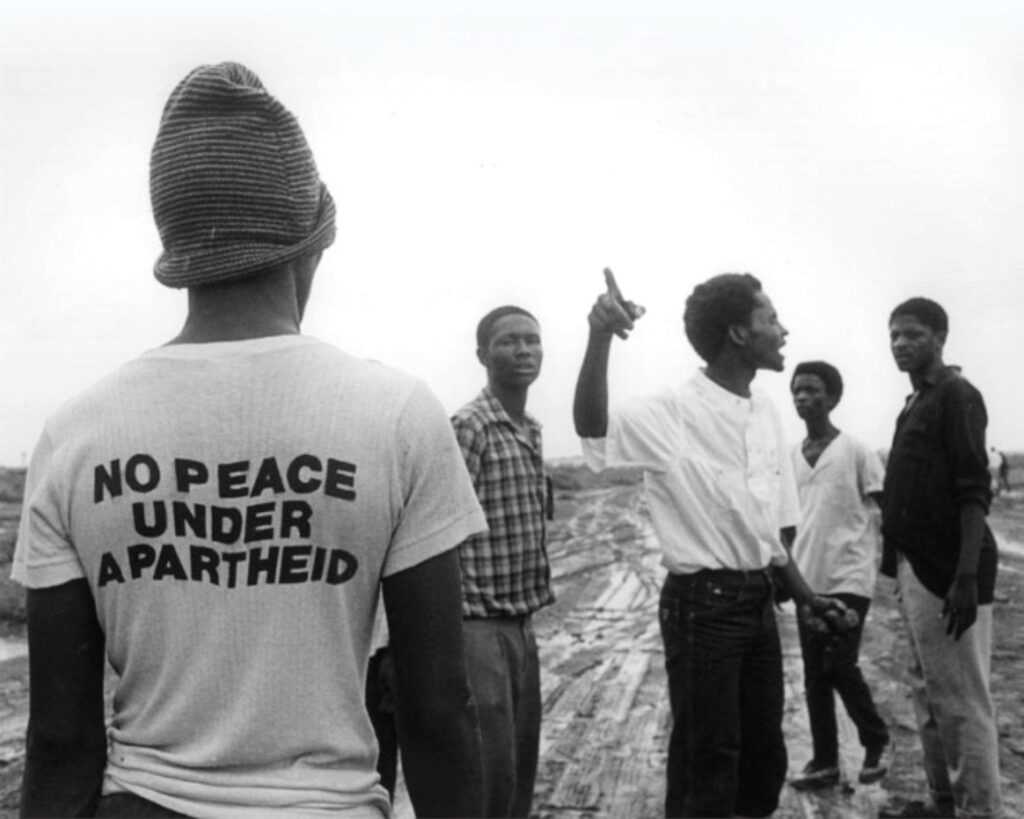
In the years that followed, Israel instituted a series of laws, policies, and practices that institutionalized Jewish racial supremacy over the indigenous Palestinian people. Through the 1950 Law of Return, the 1952 Law of Citizenship, and the 1952 Entry into Israel Law, Israel granted every Jewish person the exclusive right to enter Israel as a Jewish immigrant, to receive preferential treatment, and to obtain citizenship, thereby creating the superior status of “Jewish nationality” under Israeli law. As a result, Israeli citizenship has never been a basis for equal rights.*5 In addition, Israel adopted the 1950 Absentee Property Law, which became the main legal tool to confiscate Palestinian refugee property. It is still used today to displace Palestinians in Jerusalem. What has ensued ever since has been a legacy of continued erasure and dispossession of the Palestinian people, symptomatic of Israel’s creation and maintenance of an apartheid regime.
In 1948, after tens of thousands of Palestinians had been uprooted from Jerusalem and denied return, Israel illegally declared the western part of the city “Israel-occupied territory.”*6 It was not long before Israel cemented its de jure annexation of West Jerusalem by illegally extending to it Israeli laws and jurisdiction.*7 Similarly, following the occupation of East Jerusalem, Israel expanded the applicability of Israeli law to 70 square kilometers of the occupied territory through the 1967 Law and Administration Ordinance, leading to de jure annexation of occupied East Jerusalem. Article 11(b) of the Law and Administration Ordinance gave Israel the authority to extend its jurisdiction through a government order “to any area of Eretz Israel,” an undefined geographic area that is broader still than Mandate Palestine.*8

Following the annexation of East Jerusalem, the Israeli occupying authorities put in place discriminatory laws, policies, and practices that aimed to, illegally, create and maintain an overwhelming Israeli-Jewish demographic majority in the city, while continuing to expand the criteria that Palestinians have to meet in order to retain residency rights in Jerusalem. Through the onerous “center of life” policy that requires Palestinians to continuously prove that their center of life is in Jerusalem, Israel has revoked the residency rights of over 14,500 Palestinians from Jerusalem since 1967, escalating their forcible transfer from the city.
At the same time, the Israeli authorities use discriminatory planning and zoning as a tool to displace Palestinians on both sides of the Green Line. In East Jerusalem, Palestinians are only allowed to build on 13 percent of the land, much of which is already built up. Over the past years, the Israeli municipality has only granted about 7 percent of building permits for Palestinian residents, who represent some 40 percent of the city’s population.*9 Israel systematically demolishes Palestinian homes in Jerusalem, thus displacing hundreds of Palestinians every year. In contrast, Israel has built 15 illegal Israeli settlements in East Jerusalem, housing over 209,270 Israeli settlers,*10 with the aim of altering the character, legal status, and demographic composition of Jerusalem.
In 1980, Israel adopted its “Basic Law” on Jerusalem, declaring the city, “complete and united,” its capital.*11 In doing so, Israel reinstated its 1967 de jure annexation of East Jerusalem and its 1948 de jure annexation of West Jerusalem, in violation of international law. In resolution 478 (1980), the UN Security Council reaffirmed that “the acquisition of territory by force is inadmissible,” and determined that “all legislative and administrative measures and actions taken by Israel, the Occupying Power, which have altered or purport to alter the character and status of the Holy City of Jerusalem, and in particular the recent ‘basic law’ on Jerusalem, are null and void and must be rescinded forthwith.”*12 In 1981, Israel similarly adopted its “Golan Heights Law,” which purported to de jure annex the occupied Syrian Golan and placed the territory, until then under Israeli military rule, under Israeli civil law. In Resolution 497 (1981), the UN Security Council held that “the Israeli decision to impose its laws, jurisdiction and administration in the occupied Syrian Golan… is null and void and without international legal effect.”*13
While the Israeli government plans to formalize the illegal annexation of large parts of the West Bank, the reality is that Area C has been under de facto Israeli annexation for decades. Distinct from de jure annexation in Jerusalem and in the occupied Syrian Golan, where Israeli civil laws are illegally imposed, Israeli military laws continue to apply throughout Area C, which constitutes about 60 percent of the West Bank. However, five decades of Israeli occupation have deepened Israeli control over the territory and accelerated the transfer and erasure of Palestinians through aggressive Israeli settlement construction and expansion, the systematic exploitation of Palestinian natural resources for the benefit of illegal settlers, and discriminatory planning and zoning, which create a coercive environment for Palestinians.
Considered in isolation from the wider context of settler-colonialism and apartheid, the looming deadline for annexation is presented as a red line that in reality was crossed decades ago.
Some 250,000 Palestinians lived in the Jordan Valley prior to the Israeli occupation. About 88 percent of them were displaced from their lands during the 1967 War. They too were denied their right of return.*14 Fifty-three years later, only about 65,000 Palestinians remain in the Jordan Valley,*15 over 90 percent of which is designated as Area C, and which the Oslo Accords placed under full Israeli control.*16 Israel prohibits Palestinian construction in 70 percent of Area C. In the remaining 30 percent, Palestinians need Israeli-issued permits to build. Yet, only 1 percent of the land is planned for Palestinian development. Between 2010 and 2014, Palestinians in Area C were granted only about 1.5 percent of requested building permits. Between 1988 and 2014, the Israeli Civil Administration issued 14,087 demolition orders against Palestinian structures in Area C, as a tool of institutionalized displacement.*17
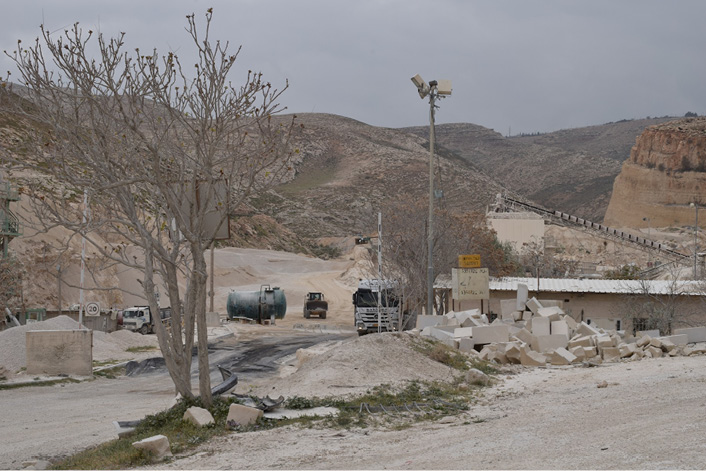
Aided by the discriminatory charters of Zionist parastatal institutions, such as the Jewish Agency and the Jewish National Fund, Israel dominates the use of land and other natural resources, planning and physical development for Palestinians on both sides of the Green Line,*18 with the aim of limiting the expansion of Palestinian cities, villages, and towns, while advancing Jewish settlement. In 2011, Al-Haq found that 500,000 illegal Israeli settlers in the West Bank consumed six times more water than the amount used by some 2.6 million Palestinians in the same territory.*19 Only about 11 percent of water from the Mountain Aquifer is available for Palestinian use in the West Bank, a policy that has been systematically used as a tool of dispossession, and which has particularly impacted the livelihoods and means of subsistence of the Palestinian people in the Jordan Valley, many of whom are rural and herding communities.*20 This process will only be accelerated with de jure annexation.
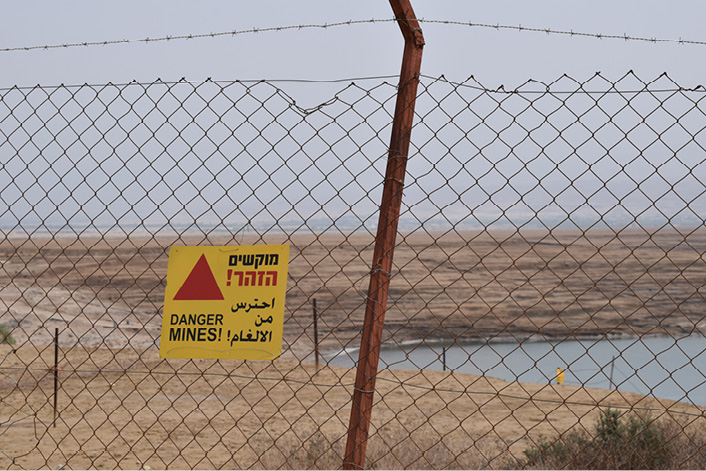
Past experience shows us that Israeli annexation, not unprecedented as it is, should not be viewed in isolation but as part of a wider settler-colonial endeavor, which constitutes the modus operandi of Israeli apartheid over the Palestinian people. Recognizing Israel’s commission of the crime of apartheid is the first step in addressing the root causes of Palestinian oppression. International criminal law enshrines apartheid as a crime against humanity in Article 7(1)(j) of the Rome Statute of the International Criminal Court. The Rome Statute defines the crime of apartheid as “inhumane acts … committed in the context of an institutionalized regime of systematic oppression and domination by one racial group over any other racial group or groups and committed with the intention of maintaining that regime.”*21
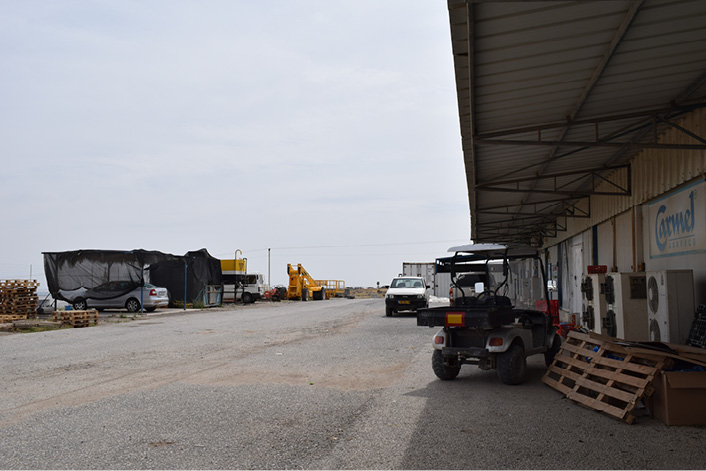
Apartheid over the Palestinian people is continuously maintained through the strategic fragmentation of the Palestinian people into separate legal, political, and geographic domains, a division which further Israeli annexation will only entrench.*22 Israeli policies and practices ranging from denial of Palestinian refugee return, the creation of a coercive environment, the revocation of residency rights, the denial of family unification and freedom of movement, collective punishment, torture, and ill-treatment, and mass arbitrary detention, including that of human rights defenders, continuously impose Israeli racial oppression and domination over Palestinians, which, institutionalized in Israeli law, maintain Israeli apartheid over the Palestinian people as a whole, on both sides of the Green Line and in exile.
An essential first step in overcoming Israeli apartheid is the recognition of the regime by civil society and states around the world. Annexation should thus be addressed within the context of apartheid, which is the overarching framework and the context within which Israel commits its widespread and systematic human rights violations against the Palestinian people. In a joint statement delivered at the UN Human Rights Council in Geneva on June 16, 2020, 114 Palestinian, regional, and international civil society organizations called on states to recognize Israeli apartheid.*23 Civil society called for the reconstitution of the UN Special Committee against Apartheid and the UN Center against Apartheid as critical steps towards ending Israel’s institutionalized regime.
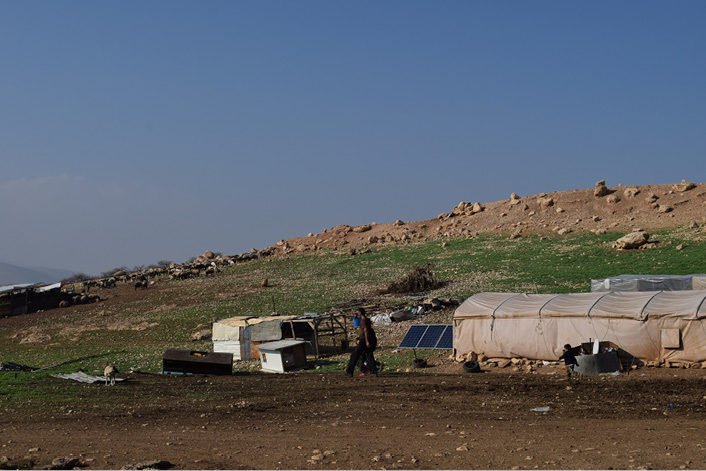
In what constitutes cumulative recognition for the apartheid framework, UN treaty bodies, UN member states, and UN special procedures have increasingly highlighted Israeli racial segregation and apartheid as disproportionately impacting Palestinians on both sides of the Green Line.*24 In June 2020, 47 UN independent experts warned that: “The morning after annexation would be the crystallization of an already unjust reality: two peoples living in the same space, ruled by the same state, but with profoundly unequal rights. This is a vision of a 21st century apartheid.”
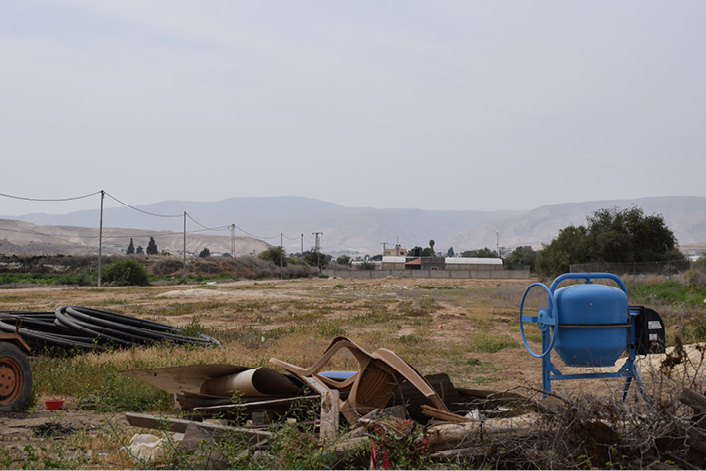
Third states have a duty to adopt effective measures, including sanctions, to bring the illegal situation to an end. They must adopt legislative measures, such as in Ireland, to ban trade with illegal Israeli settlements. They must also put an end to Israeli impunity by activating universal jurisdiction mechanisms to prosecute crimes in their own courts and by publicly supporting and cooperating with a full, thorough, and comprehensive investigation by the International Criminal Court (ICC) into the situation in Palestine. The ICC prosecutor has already warned that “extensive destruction of property without military necessity and population transfers in an occupied territory constitute war crimes under the Rome Statute,”*25 which fall under the ICC’s jurisdiction in the situation in Palestine.
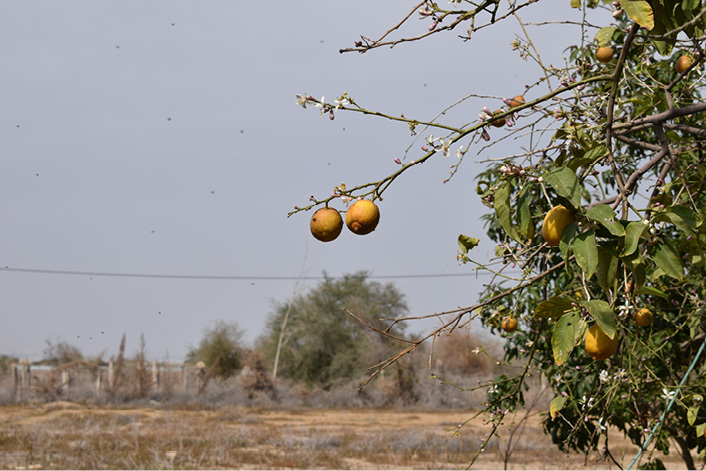
The publication of the UN database of businesses, in February 2020, listing 112 Israeli and international companies involved with Israel’s illegal settlements is another important tool in efforts to ensure corporate accountability for crimes committed in Palestine. While the database does not list all companies involved in illegal settlement activity, it is a first effective step towards recognition of the role corporations play in maintaining and developing Israel’s illegal settlement enterprise. Whether listed in the UN database or not, states must try companies involved in settlement activity within their own jurisdictions. They should also commit to supporting the annual update of the database as a step towards ending corporate complicity in Palestine.
Those who claim that annexation will bring Israel into the realm of apartheid fail to see that annexation is only a façade for what is already there. Apartheid is all around us. It is the disease, and annexation is only a symptom of it.
Overall, challenging Israeli annexation must not be seen as the end goal but as a step towards dismantling and overcoming Israel’s apartheid regime. Only by adopting effective measures, including economic sanctions, and upholding international justice and accountability for war crimes and crimes against humanity committed against the Palestinian people can third States start to effectively address annexation as a symptom of Israeli apartheid.
Civil society played an important role in dismantling apartheid in South Africa. Through increased recognition of Israeli apartheid and mobilization, the same is possible in Palestine. If past experience has taught us anything, it is that human rights violations against Palestinians will continue unabated so long as the root causes remain unaddressed. In this case, the root causes are settler-colonialism and apartheid. With or without annexation, it is time to recognize this reality.
Article photos courtesy of Rania Muhareb.
*1 Avital Ginat, “British Mandate for Palestine,” last updated on December 7, 2018, available at https://encyclopedia.1914-1918-online.net/article/british_mandate_for_palestine.
*2 Charter of the United Nations and Statute of the International Court of Justice (adopted June 26, 1945, entry into force October 24, 1945), 1 UNTS XVI, Article 2(4).
*3 UN General Assembly, Resolution 181 (II), November 29, 1947, UN Doc. A/RES/181 (II).
*4 The Covenant of the League of Nations (signed June 28, 1919, entry into force January 10, 1920), Article 22.
*5 See Al-Haq, “Palestinian, regional, and international groups submit report on Israeli apartheid to UN Committee on the Elimination of Racial Discrimination,” November 12, 2019, available at http://www.alhaq.org/advocacy/16183.html. See also, Al-Haq, “Joint Oral Intervention to the 100th Session of CERD for the Review of Israel,” December 2, 2019, available at http://www.alhaq.org/advocacy/16266.html.
*6 Al-Haq, “Al-Haq Issues Briefing Paper on Palestinian Sovereignty over East and West Jerusalem,” October 23, 2018, p. 12, available at http://www.alhaq.org/advocacy/6145.html.
*7 Ibid; see also Al-Haq, “The Occupation and Annexation of Jerusalem through Israeli Bills and Laws,” available at http://www.alhaq.org/advocacy/6263.html.
*8 Ibid.
*9 Nir Hasson, “Only 7% of Jerusalem Building Permits Go to Palestinian Neighborhoods,” Haaretz, December 7, 2015, available at http://www.haaretz.com/israel-news/.premium-1.690403.
*10 See B’Tselem, “Statistics on Settlements and Settler Population,” updated January 16, 2019, available at https://www.btselem.org/settlements/statistics.
*11 Knesset, “Basic Law: Jerusalem, Capital of Israel” (unofficial translation), available at https://www.knesset.gov.il/laws/special/eng/basic10_eng.htm.
*12UN Security Council, Resolution 478 (1980), August 20, 1980, UN Doc. S/RES/478 (1980), para. 3. See also, Al-Haq, “Annexing A City: Israel’s Illegal Measures to Annex Jerusalem Since 1948,” May 11, 2020, p. 25, available at http://www.alhaq.org/publications/16855.html.
*13 UN Security Council, Resolution 497 (1981), December 17, 1981, UN Doc. S/RES/497 (1981), para. 1.
*14 Munir Nuseibah, “The Second Nakba: Displacement of Palestinians in and after the 1967 Occupation,” June 1, 2017, available at https://orientxxi.info/magazine/the-second-nakba-displacement-of-palestinians-in-and-after-the-1967-occupation,1875.
*15 B’Tselem, “The Jordan Valley,” updated November 11, 2017, available at https://www.btselem.org/jordan_valley.
*16 Al-Haq, “Settling Area C: The Jordan Valley Exposed,” January 31, 2018, p. 8, available at http://www.alhaq.org/publications/8057.html.
*17 UN OCHA, “Under Threat: Demolition orders in Area C of the West Bank,” September 7, 2015, available at https://www.ochaopt.org/content/under-threat-demolition-orders-area-c-west-bank#:~:text=Under%20Threat%3A%20Demolition%20orders%20in%20Area%20C
%20of%20the%20West,C%20of%20the%20West%20Bank.
*18 Al-Haq, “Palestinian, regional, and international groups submit report on Israeli apartheid to UN Committee on the Elimination of Racial Discrimination,” November 12, 2019, paras. 96-108, available at http://www.alhaq.org/advocacy/16183.html.
*19 Al-Haq, “Settling Area C: The Jordan Valley Exposed,” January 31, 2018, p. 38, available at http://www.alhaq.org/publications/8057.html; see also Al-Haq and EWASH, “Israel’s violations of the International Covenant on Economic, Social and Cultural Rights with regard to the human rights to water and sanitation in the Occupied Palestinian Territory,” September 2011, available at: https://www2.ohchr.org/english/bodies/cescr/docs/ngos/EWASH-Al-Haq_Israel_CESCR47.pdf.
*20 Al-Haq, “Settling Area C: The Jordan Valley Exposed,” January 31, 2018, p. 35, available at http://www.alhaq.org/publications/8057.html; see also Al-Haq, “Water for One People Only: Discriminatory Access and ‘Water-Apartheid’ in the OPT,” April 8, 2013, available at http://www.alhaq.org/publications/8073.html.
*21 Rome Statute of the International Criminal Court (adopted July 17, 1998, entry into force July 1, 2002) 2187 UNTS 3, Article 7(2)(h).
*22 UN ESCWA, “Israeli Practices towards the Palestinian People and the Question of Apartheid,” Palestine and the Israeli Occupation, Issue No. 1, UN Doc. E/ESCWA/ECRI/2017/1, p. 4.
*23 CIHRS, “United Nations: In response to Unprecedented Recognition of Israel’s Apartheid Regime, States Must Take Concrete Steps to End this unjust reality,” June 17, 2020, available at https://cihrs.org/united-nations-in-response-to-unprecedented-recognition-of-israels-apartheid-regime-states-must-take-concrete-steps-to-end-this-unjust-reality/?lang=en.
*24 Al-Haq, “Human rights organisations welcome Concluding Observations of the UN Committee on the Elimination of Racial Discrimination on racial segregation and apartheid on both sides of the Green Line,” December 21, 2019, available at http://www.alhaq.org/advocacy/16324.html.
*25 ICC, “Statement of the Prosecutor of the International Criminal Court, Fatou Bensouda, regarding the Situation in Palestine,” October 17, 2018, available at https://www.icc-cpi.int/Pages/item.aspx?name=181017-otp-stat-palestine.


